Ever had a conversation about CrossFit and felt like you were missing key details? It’s easy to get lost in the specialized language if you’re not familiar with it.
As someone who has spent years immersed in CrossFit training and coaching, I know firsthand how important understanding these terms is for effective communication.
CrossFit has developed its own vocabulary, which can sometimes feel overwhelming. Mastering this terminology is crucial for streamlining workouts, and ensuring clear communication between coaches and participants.
In this guide, we’ll discuss the essential CrossFit terms and abbreviations so that you can enhance your coaching and overall gym experience.
So let’s dive into it!
Table of Contents
1. Understanding Core CrossFit Terminology
For gym owners offering CrossFit, it’s crucial to be familiar with the unique language used in the workouts. CrossFit terminology can sometimes be overwhelming, especially for new members, but having a clear understanding of the key terms used regularly in programming will help create a welcoming and knowledgeable environment.
Additionally, having a grasp on CrossFit terminology enhances communication between gym staff and clients, making it easier to explain workouts, pacing, and goals. As a matter of fact, when gym owners and coaches are on the same page with their language, it promotes a sense of clarity and professionalism that will benefit the overall experience in your gym, keeping members engaged and motivated.
2. Common CrossFit Acronyms
CrossFit has its own shorthand, with acronyms being a big part of daily communication. For instance, as a gym owner, knowing these terms is key to delivering clear instructions and helping your members understand the workouts. Here are some of the most common acronyms you’ll come across:
- WOD (Workout of the Day): This refers to the specific workout assigned for the day. It’s a core element of CrossFit programming and changes daily to provide variety and challenge.
- METCON (Metabolic Conditioning): These workouts focus on improving endurance and cardiovascular fitness. They typically feature high-intensity movements designed to elevate the heart rate.
- AMRAP (As Many Rounds/Reps As Possible): In this format, participants perform as many rounds or repetitions of a given circuit within a set timeframe. The goal is to push through as much as you can while maintaining form.
- EMOM (Every Minute on the Minute): A task or set of movements must be completed at the start of every minute, with any remaining time serving as rest. Similarly, this type of workout helps build stamina and pacing skills.
- RFT (Rounds for Time): The focus here is to complete a specific number of rounds as quickly as possible, balancing speed with proper technique.
- PR (Personal Record): This marks an athlete’s best performance on a given movement or workout, representing progress and personal achievement.
- Rx (As Prescribed): Completing a workout exactly as written, with no modifications or scaling. It indicates that the athlete is performing the exercises with the recommended weights and repetitions.
- HSPU (Handstand Push-Up): A demanding movement where athletes perform push-ups while in a handstand position, engaging the shoulders and upper body.
- T2B (Toes to Bar): In this core exercise, athletes hang from a bar and bring their toes up to touch it, which strengthens the abs and improves overall body control.
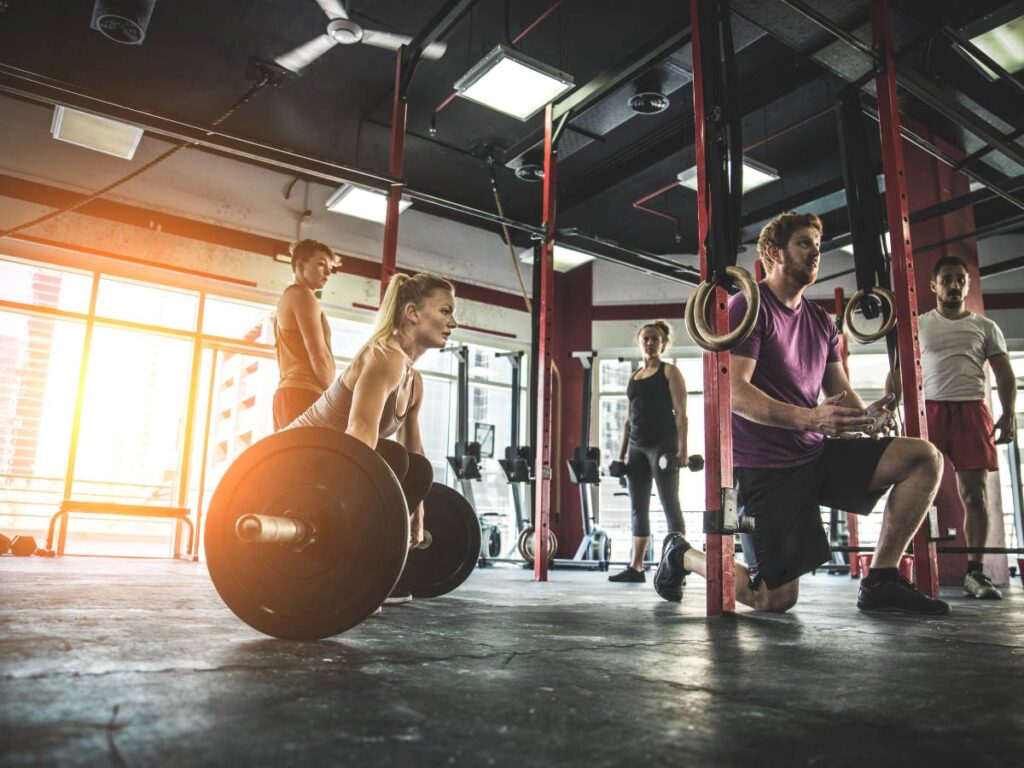
3. Lifting Lingo in CrossFit
Having a solid understanding of lifting terminology is essential for effective coaching and member safety. Below are key terms that will help ensure everyone gets the most out of each session and enhances overall performance in your gym:
- Touch-and-Go: This method involves tapping the barbell to the ground between reps and immediately continuing without pausing. It’s often used in high-intensity workouts to maintain momentum and keep the pace up.
- Squat Clean: In this movement, the barbell is lifted from the ground and caught in a full squat position. It requires coordination and strength, making it a key movement for athletes looking to develop full-body power.
- Split Jerk: A dynamic lift where the barbell is driven overhead while the lifter’s feet move into a split stance. This position provides stability when handling heavy weights and is frequently used in Olympic lifting.
- Fail: A common term for being unable to complete a lift due to fatigue or weight. Safe failure—where the barbell is dropped correctly—is an important skill that athletes must learn to protect themselves from injury.
- Front Rack: The position in which the barbell rests on the front of the shoulders. It’s commonly used in lifts like the front squat and clean, and proper positioning is critical for comfort and movement efficiency.
- Hook Grip: A grip technique where the thumb is placed under the fingers when holding the barbell. It’s especially useful for maintaining control during heavy lifts, such as cleans and snatches.
- Complex: A workout involving multiple lifting movements performed in sequence without putting the barbell down.Additionally, complexes challenge both strength and endurance, making them popular in advanced CrossFit programming.
- Triple Extension: Refers to the simultaneous extension of the hips, knees, and ankles, used to generate power in movements like cleans and snatches. Teaching this movement helps athletes perform explosive lifts more effectively.
- Deload: A planned reduction in weight or volume for a set period, often used to give athletes a break and allow for recovery. Deloading helps manage fatigue and keeps long-term progress on track.
- Sticking Point: The most difficult part of a lift where the athlete may struggle to complete the movement. Understanding sticking points helps coaches guide athletes through their weaknesses and improve technique.
- Sumo Deadlift High Pull: A wider-stance deadlift variation that ends with a pull to the chest. This lift targets the lower body, core, and upper back and is often used to improve overall strength and conditioning.
- Rep Scheme: This refers to the number of repetitions and sets programmed in a workout. Having a clear understanding of rep schemes allows gym owners and coaches to structure training sessions efficiently for their members.
Here’s a table summarizing the key lifting terms in CrossFit:
Term | Description |
Touch-and-Go | Tapping the barbell to the ground between reps without pausing to maintain momentum. |
Squat Clean | Lifting the barbell from the ground and catching it in a full squat position. |
Split Jerk | Driving the barbell overhead while moving the feet into a split stance for stability. |
Fail | Inability to complete a lift due to fatigue or weight; learning to fail safely is essential. |
Front Rack | Position where the barbell rests on the front of the shoulders, used in movements like the clean. |
Hook Grip | A grip technique with the thumb under the fingers, useful for control during heavy lifts. |
Complex | A series of lifting movements performed without putting the barbell down. |
Triple Extension | Simultaneous extension of the hips, knees, and ankles to generate power in explosive lifts. |
Deload | Planned reduction in weight or volume for recovery and managing long-term fatigue. |
Sticking Point | The most challenging part of a lift where athletes may struggle to complete the movement. |
Sumo Deadlift High Pull | A wide-stance deadlift variation that ends with a pull to the chest, targeting multiple muscle groups. |
Rep Scheme | Refers to the number of repetitions and sets programmed in a workout. |
4. CrossFit Movements and Techniques
CrossFit is based on fundamental movements that are essential for mastering more advanced techniques. These movements activate multiple muscle groups, emphasize proper form, and help athletes develop strength, endurance, and overall fitness. Here are the key movements that will help your members succeed:
Here are some of the most important movements you’ll encounter in CrossFit:
- Air Squat: A foundational bodyweight movement, the Air Squat targets the quads and glutes, serving as the basis for all squat variations.
- Front Squat: Building on the Air Squat, the Front Squat incorporates a barbell held in front of the body, adding an extra challenge for upper-body stability.
- Overhead Squat: A more advanced squat variation, the Overhead Squat requires holding a barbell overhead while squatting, demanding balance, shoulder mobility, and core strength.
- Shoulder Press: This strict press movement focuses on the upper body, particularly the shoulders and triceps. YR Fitness suggests that it’s a key movement for developing pressing strength.
- Deadlift: One of the most effective full-body lifts, the Deadlift involves lifting a barbell from the ground to a standing position, engaging the legs, back, and arms.
- Medicine Ball Clean: This movement mimics the clean with a medicine ball, helping athletes practice coordination and the mechanics of Olympic lifts.
- Push-Up: A core bodyweight exercise, the Push-Up works the chest, shoulders, triceps, and engages the core for stabilization.
- Pull-Up: An upper-body movement that strengthens the back and arms.On top of that, it’s a key exercise that leads to more advanced movements like muscle-ups.
- Box Jump: This explosive movement develops leg power and coordination. It’s also great for incorporating a cardio element into workouts.
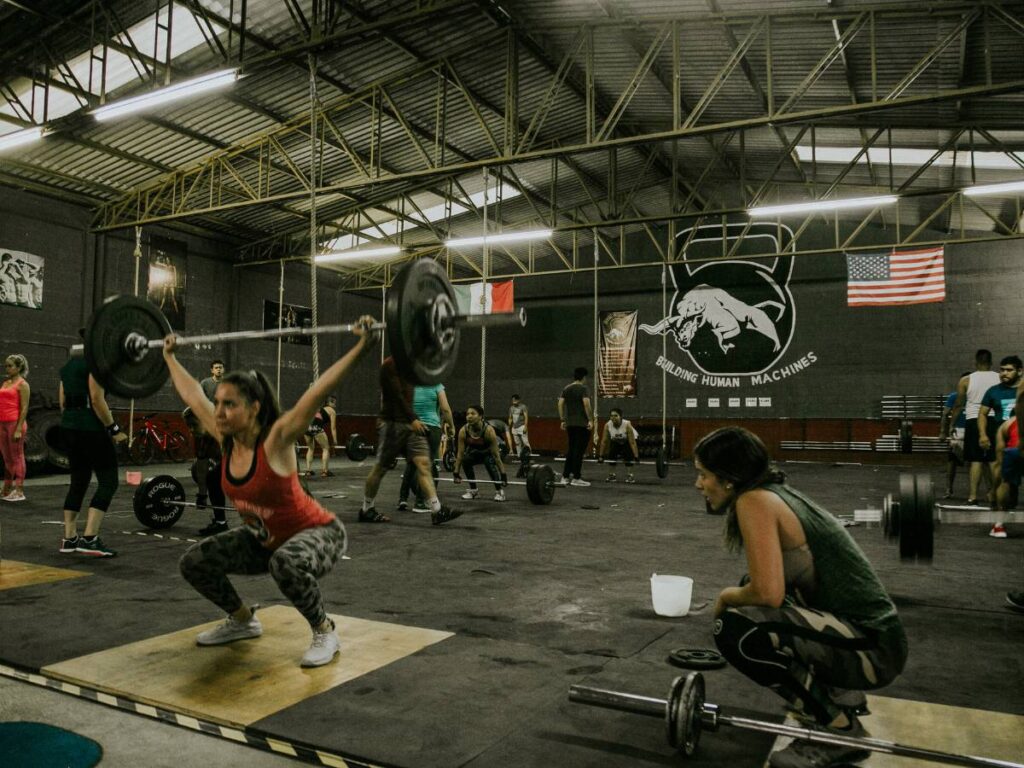
5. Must-Know CrossFit Equipment Terms
Understanding the equipment used in CrossFit is crucial for gym owners to create a safe and effective training environment. Here are the key pieces of equipment you should be familiar with to enhance daily workouts and performance:
- Barbell: A staple in most CrossFit workouts, the barbell is used for various lifts, including deadlifts, squats, and presses. For instance, it allows for progressive weight training and builds strength across multiple muscle groups.
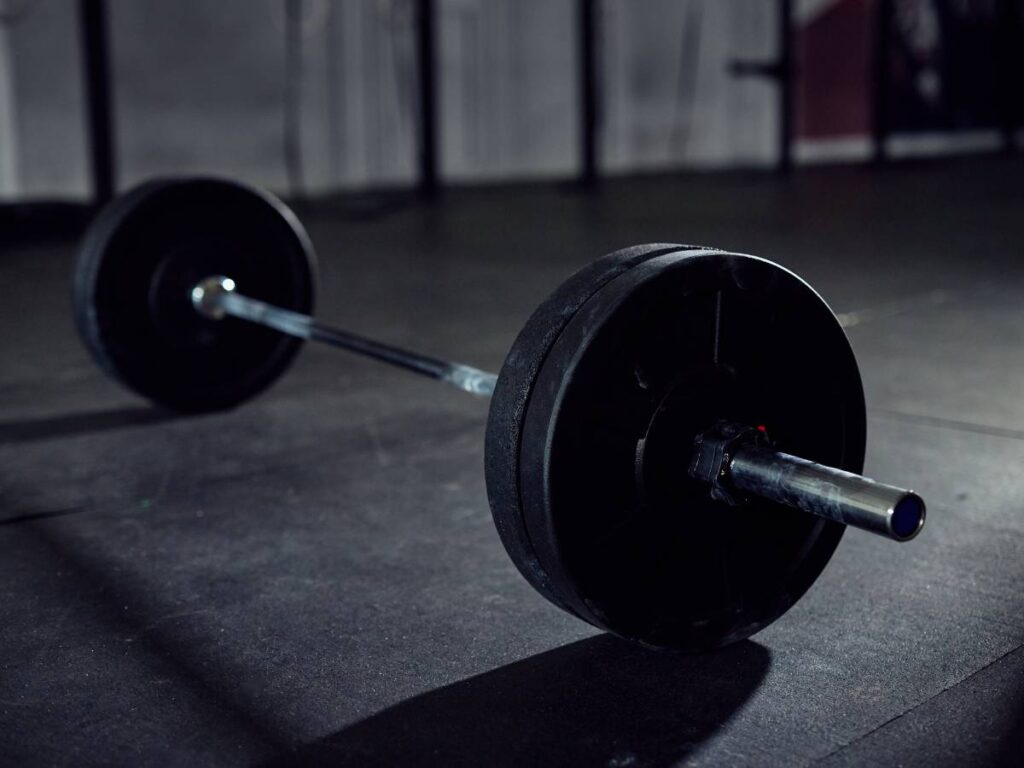
- Kettlebell: This versatile piece of equipment is used for swings, presses, and various other dynamic movements. It’s great for building strength and endurance while enhancing grip and core stability.
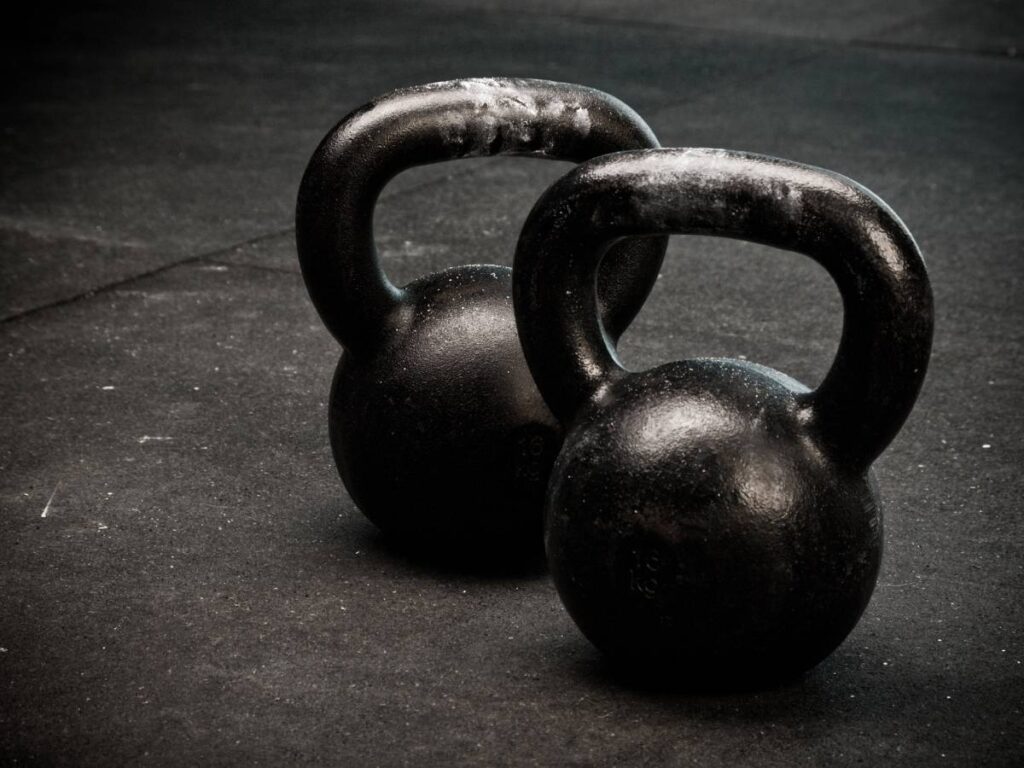
- Medicine Ball: Often used in movements like wall balls or cleans, the medicine ball is a weighted tool that helps improve coordination and explosive power.
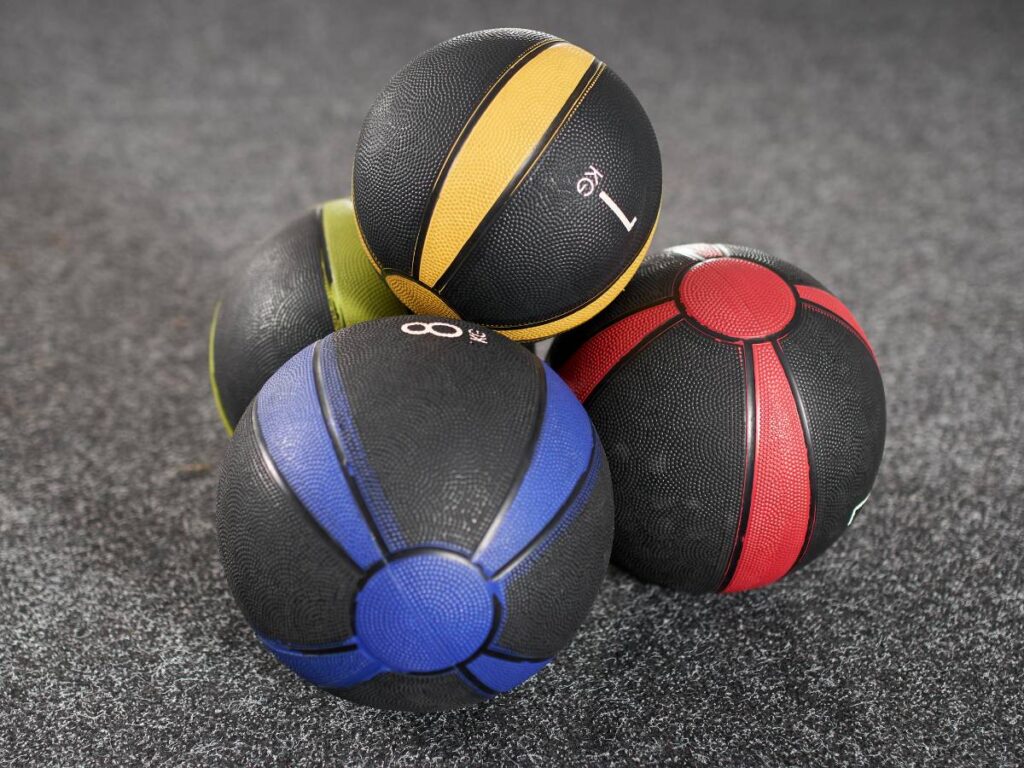
- Pull-Up Bar: Essential for upper-body movements like pull-ups, toes-to-bar, and muscle-ups. I know you will agree that it’s a critical piece of equipment for developing back and arm strength.
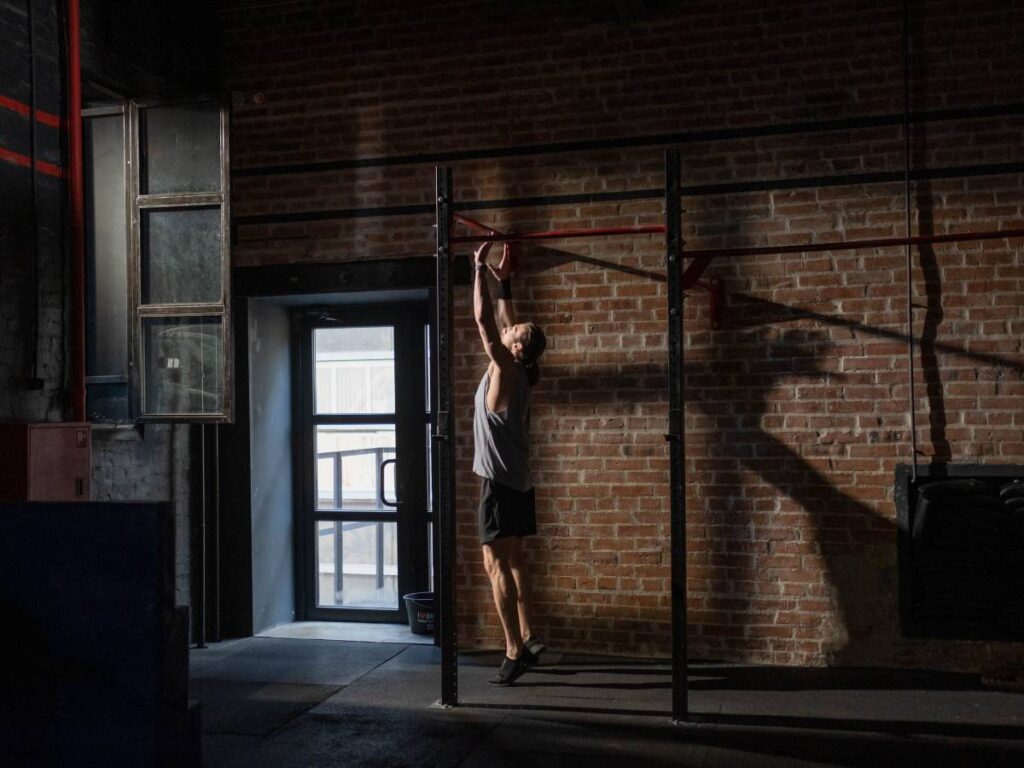
- Plyo Box: Used for exercises like box jumps, step-ups, and jump-overs, the plyo box helps improve explosive power and coordination, while also adding a cardio element to workouts.

- Rowing Machine: Often part of longer conditioning pieces, YR Fitness’ rowing machine builds endurance and cardiovascular fitness while engaging the entire body.
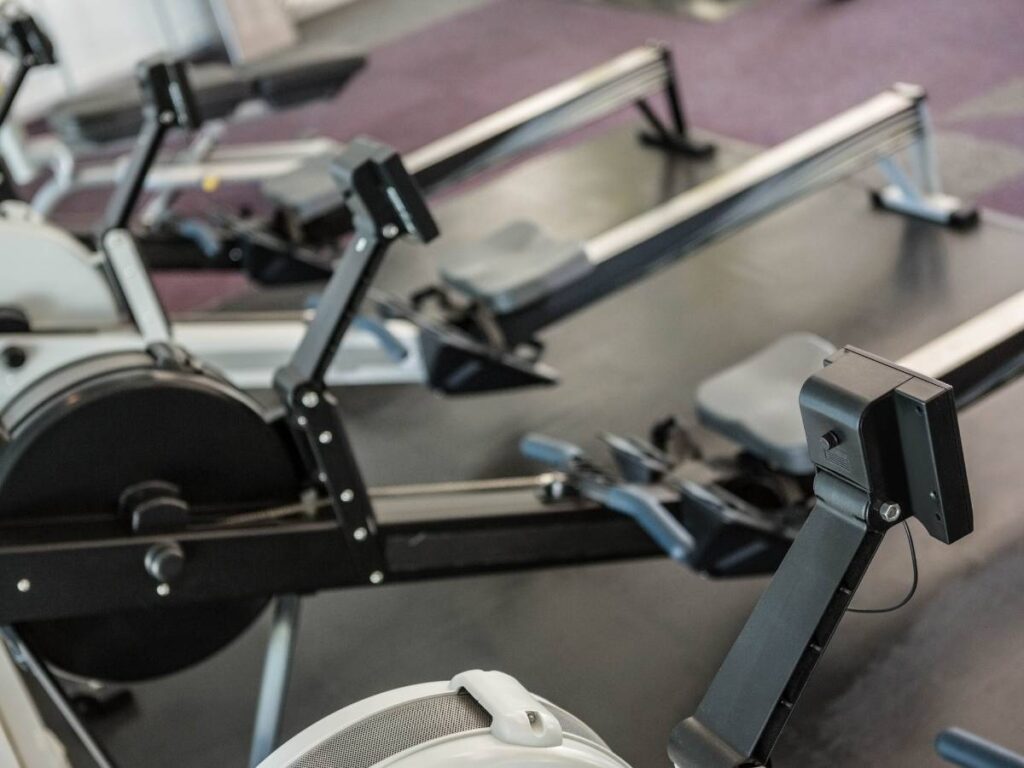
- Gymnastic Rings: Used for ring dips, muscle-ups, and other advanced gymnastic movements, the rings build upper-body strength, balance, and coordination.

- Assault Bike: This high-intensity bike targets the entire body and is a great tool for conditioning and interval training, providing a challenging cardiovascular workout.
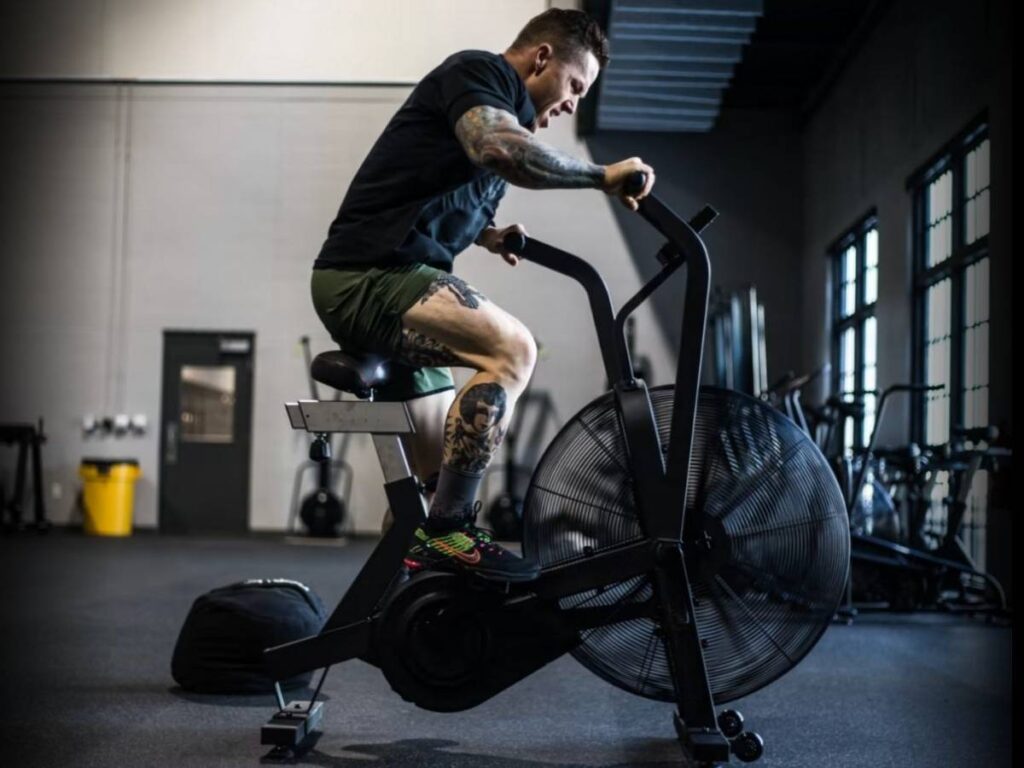
6. Additional CrossFit Abbreviations
In addition to the standard movements and lifting terminology, CrossFit incorporates a variety of abbreviations that capture the basics of the sport. Here are 10 other abbreviations you’ll often encounter in CrossFit:
- DU (Double Unders): A jump rope movement where the rope passes under the feet twice per jump. Mastering DUs can significantly enhance your cardiovascular endurance.
- GHD (Glute Ham Developer): A piece of equipment used for exercises like back extensions and sit-ups. It focuses on strengthening the posterior chain, particularly the glutes and hamstrings.
- HSPU (Handstand Push-Up): A challenging movement where you perform a push-up while in a handstand, placing extra emphasis on shoulder strength and core stability.
- MU (Muscle-Up): A combination of a pull-up and a dip, this advanced movement requires strength and coordination and is often seen as a milestone in CrossFit training.
- SDLHP (Sumo Deadlift High Pull): A compound movement that combines a wide-stance deadlift with a high pull to the chest, targeting both the upper and lower body.
- OHS (Overhead Squat): A squat performed with a barbell held overhead. This movement demands flexibility and stability, engaging the legs, core, and shoulders.
- PC (Power Clean): A lift where the barbell is pulled from the ground and caught in a partial squat. The Power Clean is a key movement in CrossFit for building explosive strength.
- PP (Push Press): A shoulder exercise where a barbell is pushed overhead with assistance from a small dip of the legs, allowing for more weight to be lifted compared to a strict press.
- S2OH (Shoulder to Overhead): This refers to any movement where the barbell moves from the shoulders to an overhead position, including strict presses, push presses, and jerks.
- TGU (Turkish Get-Up): A complex movement where the athlete moves from lying on the floor to standing, all while holding a kettlebell overhead. This exercise requires strength, stability, and coordination.
Conclusion
Understanding CrossFit terminology is vital for gym owners and coaches to streamline workouts and communicate effectively with members. Each term plays an important role in guiding exercises and enhancing performance. By mastering these terms, you’ll create a more organized and supportive training environment.
We hope this guide has provided the key terms to help you navigate the CrossFit world with confidence. At YR Fitness, we specialize in providing high-quality gym equipment designed to meet the needs of fitness professionals. Contact us today to learn how our equipment can support your gym’s growth and success.
Related articles:





